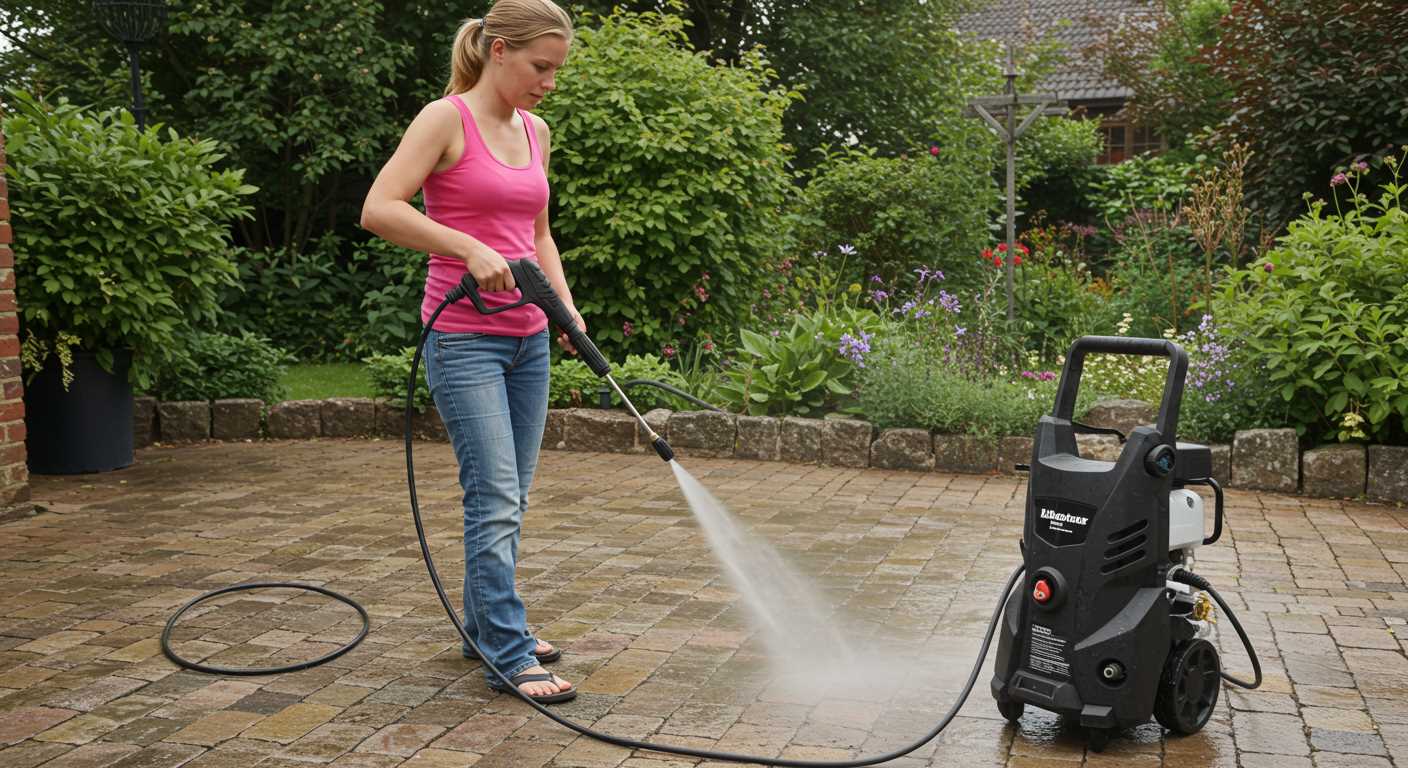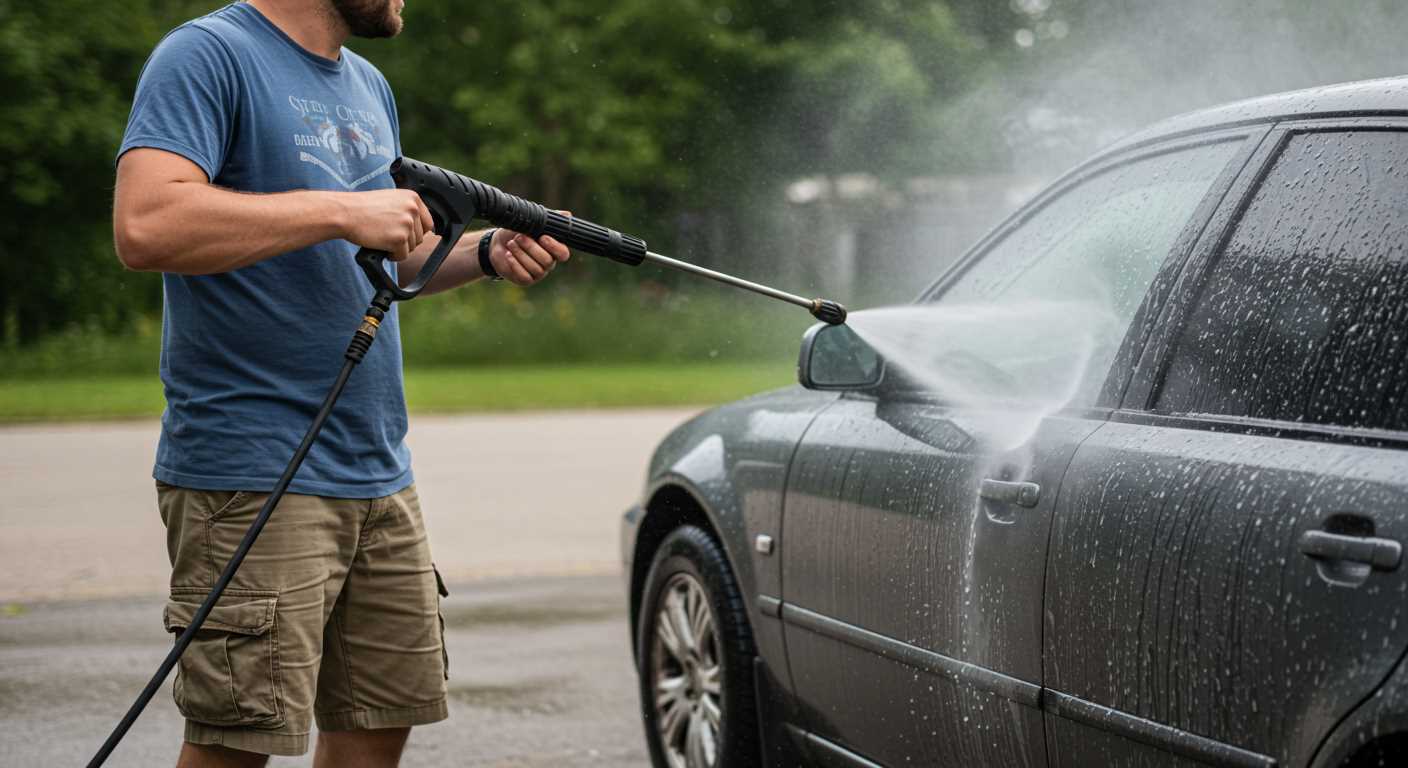



Direct application of a high-pressure cleaning device to paved areas is indeed feasible and can be very beneficial in maintaining their appearance and longevity. Prior to commencing, ensure the appropriate nozzle and pressure setting are selected to avoid damage. A wide-angle nozzle is generally advisable, as it disperses the water flow, reducing the risk of dislodging the individual stones or bricks.
Regular maintenance is key. Cleaning these surfaces with a suitable machine helps remove dirt, algae, and moss build-up, but it’s essential to perform a spot test in a discreet section first. Begin with a lower pressure and gradually increase it as necessary. Always keep the nozzle at a safe distance to prevent any unwanted erosion or displacement of the materials.
In conclusion, successful cleaning of paved areas with a high-pressure device requires careful preparation and technique. Following precise guidelines will yield impressive results while preserving the integrity of your driveway or patio.
Can You Use a Pressure Washer on Block Paving
Applying high-pressure cleaning equipment on a paved surface is feasible, but caution is necessary. Set the device to a lower pressure setting to prevent dislodging the bricks or causing harm to the joints. Aim for around 1200 to 1500 psi, as higher settings can lead to damage.
Start by clearing loose debris and vegetation from the area. A thorough rinse before using a detergent will help lift more entrenched dirt. Choose a cleaning solution that’s suitable for your surface type; some detergents specifically cater to porous materials.
When cleaning the joints, keep the nozzle at a distance of about 30 cm to avoid unnecessary wear. Direct the spray at an angle rather than straight down, ensuring that the force does not undermine the structure of the paving.
After cleaning, inspect the joints for sand or grout loss, as this can arise during the process. If you notice any gaps, replenish with new jointing sand to maintain stability and prevent weed growth.
Finally, always read the manufacturer’s guidelines for both the cleaning equipment and the paved surface to ensure compatibility. This attention to detail will result in a well-maintained area, prolonging the life of the patio or driveway.
Understanding Paving Materials
When considering outdoor surfaces, the composition of the materials plays a crucial role in maintenance decisions. A variety of products exist for these surfaces, each with unique strengths and weaknesses. In this segment, I’ll explore the common materials used for these surfaces and how they can impact cleaning methods.
Types of Materials
Typical options for such surfaces include concrete, clay, and natural stone. Each type has distinct characteristics that influence dirt accumulation and cleaning requirements.
| Material | Characteristics | Maintenance Considerations |
|---|---|---|
| Concrete | Dense, robust, and commonly used; can stain easily. | Regular cleaning recommended; surface permeability affects how grime settles. |
| Clay | Offers a natural appearance, available in various colours; less prone to cracking. | Can be sensitive to heavy cleaning; may require special care to maintain colour. |
| Natural Stone | Durable and unique in appearance; varies greatly in texture and porosity. | Requires gentle cleaning; some stones may absorb water leading to damage. |
Impact of Material on Maintenance
The inherent qualities of these materials significantly affect how they should be cared for. For example, porous substances may retain dirt and moisture, requiring more gentle methods to protect the integrity of the surface. On the other hand, denser materials can handle more vigorous cleaning techniques without compromising their structure.
Choosing the right method for cleaning depends on understanding these differences and recognising that tailored care can prolong the life of your investment.
Advantages of Using a Pressure Washer on Block Paving
A high-pressure cleaning device is an excellent tool for revitalising your paved surfaces. One of the primary benefits is its ability to remove accumulated dirt, grime, and moss effectively. This cleaner not only enhances the appearance but also contributes to the longevity of the surface.
Deep Cleaning

Utilising a strong water jet ensures a thorough cleaning process. The concentrated force dislodges stubborn stains and debris that would be challenging to remove through traditional methods. This level of cleanliness restores the original look of the stones, making them appear almost new.
Time Efficiency
Employing this method considerably reduces the time spent on maintenance compared to manual scrubbing. The pressure system covers a large area in a short period, making it ideal for extensive outdoor spaces. This efficiency allows for more time to be dedicated to enjoying the outdoor area rather than maintaining it.
Risks and Considerations Before Pressure Washing

Assess the potential damage to surfaces before proceeding with any cleaning. High-pressure techniques may degrade the integrity of the materials, especially if the nozzle is too close or the pressure level is excessively high.
Surface Assessment
- Check for cracks or loose stones. Repair any damaged areas before cleaning.
- Ensure the joints between stones are intact. Excessive force can displace jointing sand.
- Investigate for mould or algae growth. Mild cleaning solutions may be more suitable for such cases.
Environmental Impact

- Consider waste water disposal regulations in your area. Contaminants could harm local flora and fauna.
- Avoid using harmful chemicals or detergents. They can contribute to pollution and may degrade surrounding vegetation.
Using the right nozzle is paramount. A fan nozzle is preferable as it distributes pressure evenly, minimising the risk of surface damage.
Finally, maintain a safe distance to prevent recoiling debris. Protective gear, including goggles and gloves, is advisable to safeguard against flying particles and high-pressure spray.
Recommended Pressure Settings for Block Paving
For optimal results with any high-pressure cleaning device, maintain a setting between 1300 and 2000 psi. This range effectively removes grime without risking damage to the bricks or joints.
When tackling dirt or stains, it’s best to start at the lower end of this spectrum. A psi of around 1300 efficiently cleans with minimal risk. Increase the pressure incrementally until achieving desired results, avoiding excess force that could penetrate joint sand or displace stones.
Utilising a 25 to 40-degree nozzle is advisable for wider coverage, ensuring that the water stream disperses evenly. Maintain a distance of approximately 12 to 18 inches from the surface during operation to prevent concentrated blasts that may erode materials.
For stubborn stains, like oil or moss, consider applying a pre-treatment solution and allowing it to penetrate before beginning the washing process. This approach softens tough deposits, reducing the need for excessive pressure.
Regular maintenance with these recommendations will prolong the life of the surface while keeping it looking pristine. Proper technique and pressure settings create a balance between cleaning efficiency and surface integrity.
Cleaning Techniques for Optimal Results
For achieving the best possible outcomes, it’s crucial to implement certain techniques during the cleaning process. Begin by adjusting the nozzle to a narrow spray pattern, as this narrower force concentrates energy on particularly stubborn stains.
Surface Preparation
Prior to engaging in any cleaning activity, clear the area of debris, dirt, and loose stones. This will prevent foreign particles from causing damage during the wash and enable a more effective clean. Next, consider applying a detergent specifically formulated for the material being treated. Allow sufficient time for the detergent to penetrate the grime before rinsing.
Technique Application
Maintain a consistent distance of 30-40 cm between the spray tip and the surface being treated. This distance plays an integral role in preventing damage while still providing enough force to dislodge dirt. Move the nozzle in overlapping strokes, ensuring each section is cleaned thoroughly. Follow up with a rinse to remove any residual cleaning solution, and allow time for the area to dry completely. This procedure enhances the longevity of the surface while keeping it looking new.
Post-Washing Care and Maintenance for Block Paved Areas
After cleaning, it’s vital to address the maintenance of your paved surfaces to prolong their lifespan and maintain aesthetics. Start by inspecting joints between the stones for any loss of sand. If gaps are visible, refill them with kiln-dried sand, ensuring stability and preventing weed growth.
Next, applying a sealant can offer additional protection against stains and moisture infiltration. Wait at least 24 hours after washing before applying sealant to allow surfaces to dry completely. Choose a product specifically formulated for the type of pavement you have.
Regular sweeping and occasional rinsing can help keep the area looking clean. Use a broom for debris and leaves, and occasionally hose down the surface to remove loose dirt.
Monitor for signs of moss or algae growth. Prompt treatment with a suitable biocide is recommended to prevent these organisms from taking hold, which can damage the material over time.
Lastly, plan for routine inspections at least twice a year, focusing on cracks or shifts in the stones. Promptly address any structural issues to avoid costly repairs later on.









